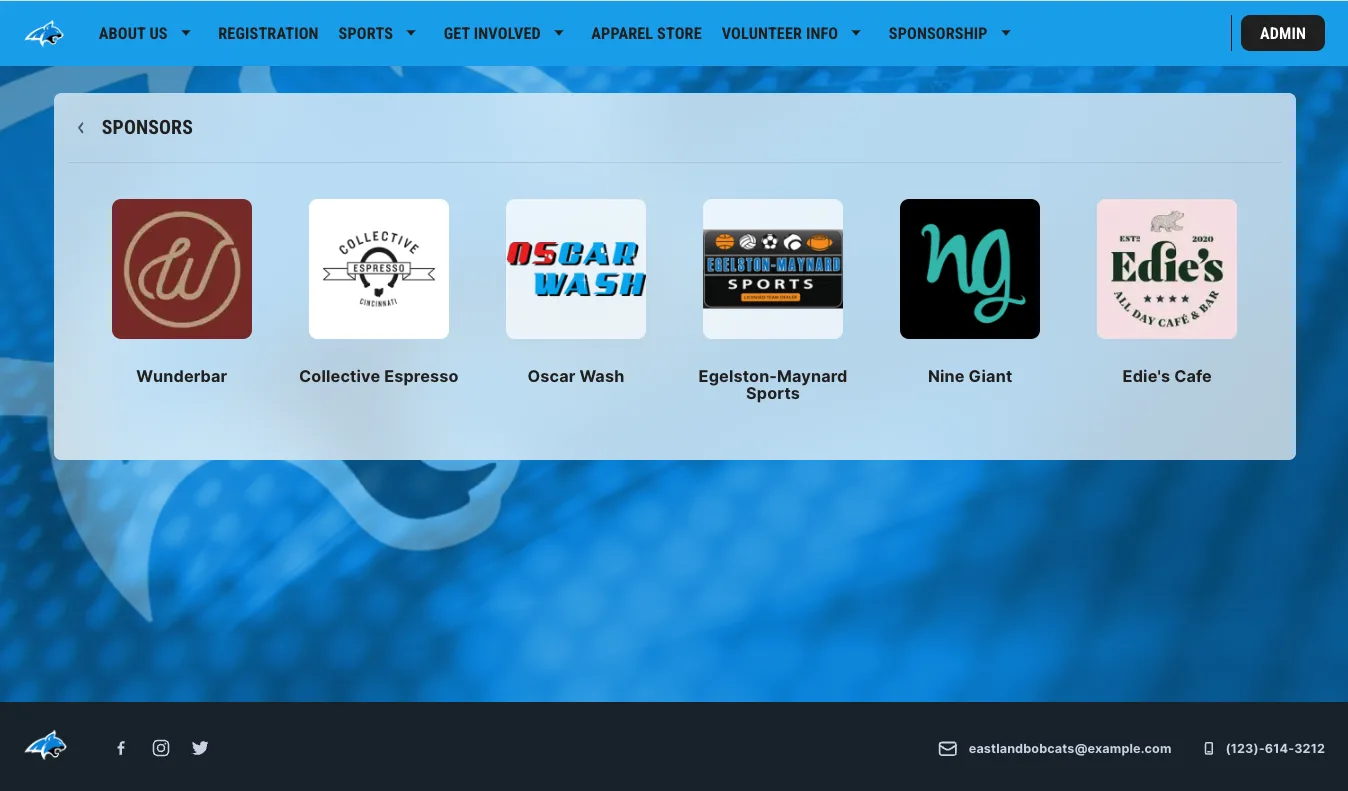
Securing sponsorship from local businesses can be an effective way to fund your organization's projects, events, or programs.
Local sponsorships are an excellent way for businesses and organizations to support their communities. It involves one party providing financial or other resources to another party in exchange for promotional exposure, brand alignment, or other benefits.
This article will guide you through creative ways of approaching local businesses for sponsorship, from understanding the benefits to nurturing long-term relationships.
Benefits of getting local sponsors
Before you approach local businesses, it's important to understand the mutual benefits of sponsorship.
Benefits for your organization:
- Financial support: Sponsorships can provide the funds to run events, programs, or projects.
- Increased visibility: Local and event sponsorships often increase publicity, raising awareness for your organization.
- Networking opportunities: Working with sponsors can lead to new connections and potential partnerships.
Benefits for the sponsoring business:
- Brand exposure: Sponsoring events or organizations can increase brand visibility in the community.
- Enhanced reputation: Supporting local initiatives can boost a company's image and reputation.
- Networking opportunities: Sponsorships can facilitate connections with smaller businesses and organizations.
How to approach local businesses for sponsorship
1. Identify local businesses
Before approaching local businesses, you must conduct thorough research to identify suitable sponsors.
List local businesses that align with your organization's values and objectives. Consider companies with a history of supporting similar initiatives, as they may be more likely to sponsor your project or event.
Here’s how to find local sponsorship opportunities:
- Networking events: Attend local business events, chamber of commerce meetings, or industry conferences to connect and identify potential sponsorship partners.
- Online platforms: Search for local events or organizations on LinkedIn, Facebook, or dedicated sponsorship websites like Sponsoo.
- Local business associations: Join local business associations or nonprofit groups that offer funding opportunities for members to engage in sponsorships.
Evaluate potential sponsors based on their target demographics, values, and corporate social responsibility initiatives. Doing this lets you identify businesses that are a good fit for your organization.
💡PRO TIP: Put a sponsorship form on your website to make it easier for local business owners to sponsor your team. Set up this page in minutes with a Jersey Watch account.

2. Develop a compelling sponsorship proposal
A well-crafted sponsorship proposal is essential for attracting local businesses. Here’s how to create one:
- Determine sponsorship levels. Create different sponsorship levels with varying benefits and financial commitments. This allows businesses to choose the level of involvement that best suits their budget and objectives.
- Outline benefits and expectations. Clearly outline what each sponsorship level offers, such as logo placement, advertising opportunities, or event tickets. Be specific about what you expect from sponsors and what they can expect in return.
- Showcase past successes. Include examples of past events or projects that have been successful due to sponsorships. This demonstrates your organization's track record and increases the likelihood of securing new sponsors.
Be sure to create a youth sports sponsorship package for each prospective sponsor.
Design sponsorship packages with varying levels of investment, clearly outlining the benefits and deliverables for each level. This offers potential sponsors options based on their budget and desired level of involvement.
3. Make contact with potential sponsors
Once your sponsorship proposal is ready, it's time to reach out to potential sponsors.
Research each business to find the most appropriate person to approach, such as the owner, marketing director, or community relations manager. Connecting with the right person increases the chances of a positive response.
When reaching out, mention any existing connections or shared experiences to establish rapport. A personal touch can make your proposal stand out and increase the likelihood of securing sponsorship.
4. Pitch your proposal
Presenting your sponsorship proposal professionally and confidently is crucial for success.
Ensure that your proposal is well-designed, visually appealing, and free of errors. When presenting in person or via video call, dress professionally and speak clearly and confidently about your organization and the benefits of sponsorship.
Sponsors may want to negotiate the terms of the sponsorship, such as the financial commitment or specific benefits. Be flexible and open to discussing their concerns, but also stand firm on aspects that are non-negotiable for your organization.
5. Nurture long-term relationships with sponsors
Establishing and maintaining strong relationships with sponsors is essential for continued support.
- Maintain open communication: Keep sponsors informed about your organization's progress, successes, and challenges. Regular follow ups and open communication can help build trust and strengthen the relationship.
- Deliver on promises: Fulfill all the commitments made in your sponsorship agreement, such as providing the agreed-upon benefits and recognition. This demonstrates your organization's professionalism and reliability, increasing the chances of ongoing support.
A good way to maintain relationships with sponsors is by hosting fundraising events. This helps local organizations and businesses get their name in front of more people. If you’re stuck on fundraising ideas, read Best Fundraising Ideas for Youth Sports.
6. Measure the success your sponsorships
To evaluate the effectiveness of local sponsorships, consider these steps:
- Setting Key Performance Indicators (KPIs): Establish measurable metrics for the sponsorship, such as increased event attendance, social media engagement, or sales.
- Tracking and analyzing results: Monitor your KPIs throughout the sponsorship, making adjustments to optimize performance and ensure a successful partnership.
Examples of local sponsorships
Local sponsorships can take many forms, such as financial contributions, in-kind donations, access to facilities, or coaching assistance. Let’s explore some of the common sponsorship opportunities available.
Local businesses
One of the most common forms of local sponsorship for youth sports teams comes from local businesses. This includes:
- Retail stores.
- Restaurants.
- Service providers.
Small business owners often provide financial support in exchange for advertising opportunities, such as displaying their logo on:
- Team jerseys.
- Banners at games.
Mentions on the team's website or social media channels.

Sponsorships like this benefit the business by increasing visibility and goodwill, and they also help youth sports teams pay for uniforms, equipment, and other expenses.
Professional sports teams and corporate sponsors
You can also get sponsorships from professional sports teams and corporate sponsors like Nike. It's a win-win because it strengthens the connection between the local and professional communities, encourages kids to play sports, and fosters a pipeline of talent.
Corporate sponsorship might help with:
- Financial support.
- Access to training facilities.
- Coaching help.
Community organizations
Often, nonprofit organizations like Rotary and Lions Clubs, chambers of commerce, and charitable foundations sponsor youth sports teams. These groups usually care about supporting their community and see youth sports as a way to promote health, wellness, and teamwork.
Community organizations may donate:
- Money.
- Volunteer hours.
- Equipment or transportation.
Local government agencies
Sometimes local government agencies, such as parks and recreation departments or city councils, may sponsor youth sports teams. Support can come in many forms, including direct financial assistance, reduced or free access to public facilities, or even grants for youth sports programs.
Getting the most out of sponsorships
To maximize the exposure of your local sponsorship, consider these strategies:
- Leveraging social media. Use social media platforms to promote the sponsorship, engage with your target audience, and showcase the sponsor's involvement.
- Co-branding opportunities. Incorporate the sponsor's branding into event materials, merchandise, or other promotional items to strengthen the partnership and increase brand visibility.
- Creative activation ideas. Develop unique and engaging activation ideas that highlight the sponsor's involvement, such as experiential marketing events, interactive displays, or special promotions.
To foster long-lasting relationships with your sponsors, communicate regularly, provide updates on the sponsorship's progress, and express gratitude for their support. This approach can lead to future sponsorship opportunities and stronger partnerships.
🧠 Learn: The Best Sports Sponsorship Examples
Getting more sponsorship dollars for your team
Approaching local businesses for sponsorship can be a successful strategy for securing a good amount of money and support for your organization.
By understanding the benefits of sponsorship, researching potential sponsors, developing a compelling proposal, and nurturing long-term relationships, you can increase your chances of attracting and retaining valuable sponsors.
Local sponsorships FAQs
What types of businesses should I approach for sponsorship?
Focus on local businesses that align with your organization's values and have a history of supporting similar initiatives.
How can I make my sponsorship proposal stand out?
Create a well-designed, visually appealing proposal that clearly outlines the perks and expectations for each sponsorship level. Showcase past successes and make a personal connection with the potential sponsor.
How should I handle negotiations with potential sponsors?
Be open to discussing their concerns, but stand firm on non-negotiable aspects for your organization. Aim to strike a balance that benefits both parties.
How can I maintain a strong relationship with my sponsors?
Maintain open communication, provide regular updates, and deliver on your promises. Building trust and demonstrating professionalism will help nurture long-term relationships and local connections.
Is it necessary to offer different sponsorship levels?
Offering different sponsorship levels allows businesses to choose the level of involvement that best suits their budget and objectives. This can make your sponsorship program more appealing to a wider range of potential sponsors.